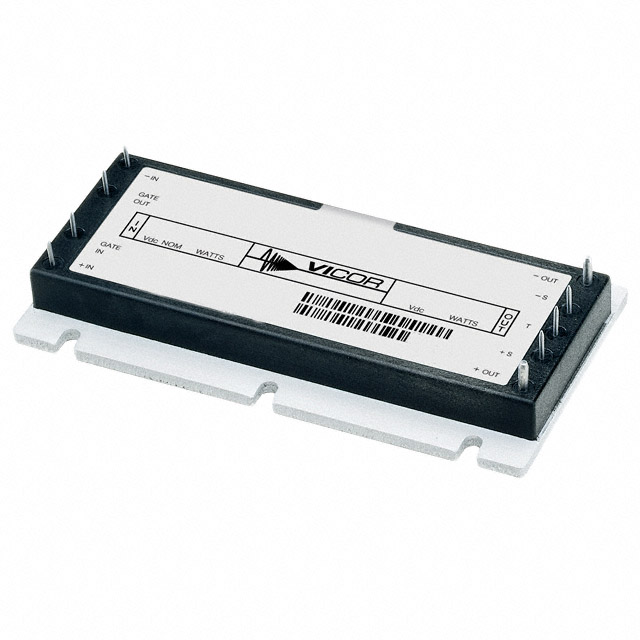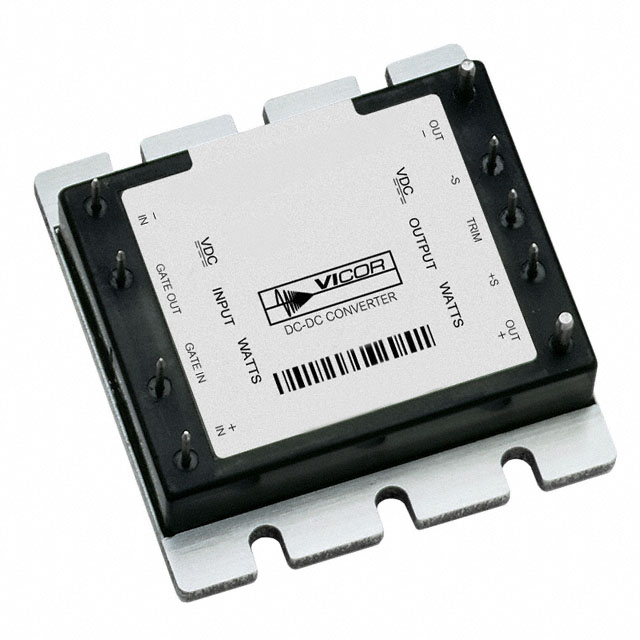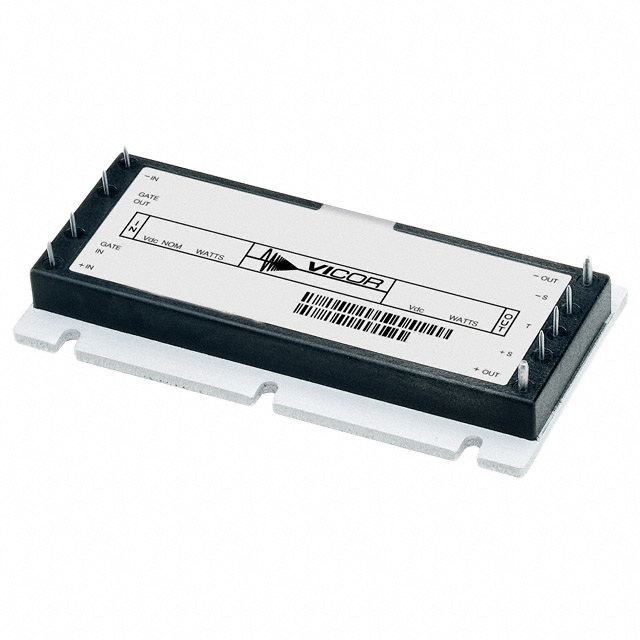
Vital Signs Monitor Electronics: Tiny Signals, Big Decisions
Global electronic component supplier ERSAELECTRONICS: Rich inventory for one-stop shopping. Inquire easily, and receive fast, customized solutions and quotes.
If the MCU (yes, both the Marvel Cinematic Universe and the microcontroller unit) had a crossover episode, the Vital Signs Monitor would be the unsung hero: reading microvolts in a noisy ward like Daredevil in a nightclub, crunching numbers like Shuri, and staying on all shift with the power discipline of the Batcave.
Table of Contents
.png?x-oss-process=image/auto-orient,1/quality,q_70/format,webp)
1) Cold Open: What a Vital Signs Monitor Actually Does
A Vital Signs Monitor isn’t a single sensor—it’s an orchestra. ECG listens for electrical beats; SpO2 uses light to estimate oxygen saturation; NIBP squeezes an arm, eavesdropping on pressure oscillations; temperature and respiration keep tabs on the slow, quiet truths. The Vital Signs Monitor converts tiny, fussy signals into trustworthy numbers while juggling cables, cuffs, digits, and alarms without becoming a melodrama.
Electronics-wise, the Vital Signs Monitor is a five-act play: AFEs that love small signals, ADCs with honest references, a timing core that never loses a beat, a UI that makes sense at 3 AM, and a power tree that laughs at brown-outs. Think Andor planning with Guardians of the Galaxy banter: precise, but fun.
2) Design Targets & System Requirements
- Accuracy & fidelity: ECG μV integrity, PPG SNR in motion, NIBP repeatability, temperature resolution, respiration stability.
- Latency & responsiveness: Waveforms feel live; alarms don’t nap.
- Safety: Isolation for patient-applied parts, over-pressure protection, safe default states.
- Uptime: Long battery life; brown-out behavior that errs on safety and logging.
- Usability: Big numbers, honest alarms, one-hand controls, staff muscle memory respected.
- Traceability: Events, thresholds, calibrations, and maintenance hours in logs.
3) End-to-End Architecture (Block by Block)
At a high level the Vital Signs Monitor is a multi-channel data-acquisition system wrapped in a friendly box.
- Sensors & Patient Interfaces — ECG electrodes, SpO2 probe, NIBP cuff + pump/valves + transducer, temp probe, respiration channel.
- AFEs — ECG IA + ΔΣ ADC; PPG TIA + LED drivers; pressure AFE; temp bridge or digital sensor; airflow/impedance resp AFE.
- MCU/SoC — DMA-fed ADCs, DSP for filters, arrhythmia checks, oscillometry solver, alarm engine.
- UI — display + LEDs + buzzer; rotary/keys or touch with haptics; clear trends and numerics.
- Power — medical AC/DC + battery; PMIC with bucks/LDOs; charger + fuel gauge; isolation partitions.
- Connectivity — nurse-call relay, USB, BLE/Wi-Fi via gateway, optional Ethernet; data export; firmware updates under strict rules.
.png?x-oss-process=image/auto-orient,1/quality,q_70/format,webp)
4) ECG Electronics: From Microvolts to Meaning
ECG is the Stranger Things of the Vital Signs Monitor: lots of subtle signals, occasional Demogorgons (motion and cautery), and a team that wins with good timing and better friends. The ECG front end starts with instrumentation amplifiers boasting high CMRR, low input bias, and rail-quiet routing. Add right-leg drive (or driven reference) to keep common-mode in its lane, and protect the inputs with ESD clamps that won’t leak like a gossip column.
4.1 Analog Front End
- Instrumentation amplifier (IA) with programmable gain; input impedance in the megaohms; input RCs for RFI immunity.
- Lead-off detection via bias currents or impedance measurements; label traces accordingly.
- Right-Leg Drive (RLD) to tame common-mode; phase-compensated to avoid oscillations.
- ΔΣ ADC (16–24-bit) with a quiet reference and digital decimation for glorious SNR.
4.2 Filters & Timing
- Baseline wander removal (HPF ~0.3–0.5 Hz), low-pass ~40 Hz for monitoring; notch/adaptive for mains hum.
- QRS detection with refractory windows; PVC beats vs. motion; simple arrhythmia flags for alarm engine.
4.3 Safety & Isolation
- Patient isolation barrier where needed; creepage/clearance and leakage limits for the applied part category.
- Protect against defib pulses with input networks and fast recovery.
5) SpO2 / PPG: Light, Tissue, and Low-Noise AFEs
The SpO2 channel is the Barbie movie set: lighting is everything, timing is choreography, and the soundtrack is a photodiode current that whispers truths through tissue. In the Vital Signs Monitor, we drive red/IR LEDs in alternating windows and capture the photodiode current with a TIA that’s allergic to noise.
5.1 LED & Photodiode Path
- LED drivers with controlled current, rise/fall shaping, and guard times.
- TIA with low input current noise; programmable gain to cover fingertip variance; ambient subtraction frames.
- Sampling synchronized to LED windows; moving-average and notch for motion; ratio-of-ratios for SpO2.
5.2 Motion & Skin Realities
- Motion artifacts are the MCU’s pranksters; use accelerometer-gated weighting or adaptive filters.
- Low perfusion modes with longer windows; guard against clipping and quantization sins.
6) NIBP: Oscillometry, Pumps, Valves & Safety
NIBP is the Ocean’s Eleven heist of the Vital Signs Monitor: inflate, hold, deflate; whisper-quiet pumps, smooth valves, and a pressure transducer that tattles on everyone. Oscillometry looks for those tiny pressure ripples riding on the cuff pressure. The electronics must resolve sub-mmHg oscillations while controlling hardware that hisses for a living.
6.1 Hardware Path
- Pressure sensor (bridge or MEMS) → IA/ADC with linear gain and anti-alias filters.
- Pump driver with current control; valves (release/bleed) under PWM or DAC control.
- Snubbers and RCs tame the inductive drama; acoustic dampers keep the ward happy.
6.2 Algorithms & Safety
- Inflate to estimate, deflate in steps or continuous slope; track oscillation amplitude to find MAP, then compute systolic/diastolic.
- Over-pressure watchdog with hard cutoff; leak detect; retry rules; log everything.
.png?x-oss-process=image/auto-orient,1/quality,q_70/format,webp)
7) Temperature & Respiration: Quiet Channels That Matter
Temperature is the slow jazz of the Vital Signs Monitor: low drift, high trust. Choose a precision thermistor with a linearization scheme (Steinhart–Hart) or a digital thermometer with known accuracy across the clinical range; isolate and shield the cables like you mean it.
Respiration shows up via thoracic impedance, airflow sensors, or can be inferred from PPG. Impedance methods need small AC injection with careful isolation; airflow transducers want clean bridges and honest references.
8) Compute & UI: MCUs/SoCs, Displays, UX & Accessibility
The brain of the Vital Signs Monitor is usually a low-power MCU with DSP instructions (or a small SoC) juggling DMA, timers, and a pile of interrupts. Channels feed ring buffers; filters run in fixed-point; alarms ride their own high-priority lane. If you add a rich display, split UI from acquisition so graphs never skip when the user twirls a knob.
8.1 UI/UX in the Ward
- Big numerics; crisp waveforms; alarms that explain themselves.
- Night mode that respects circadian sanity; anti-smudge touch or glove-friendly keys; tactile feedback or haptics.
- One honest button: silence alarm (with limits). Another honest button: NIBP start/stop.
8.2 Storage & Logging
- Trends and events in FRAM/Flash with checksums; exportable in human-readable form.
- Configuration diffs since last maintenance; calibration timestamps; battery SOH.
9) Power: PMICs, Batteries, Rails & Thermal
Power is personality. The Vital Signs Monitor mixes quiet analog with loud motors (NIBP), so split rails like you’re seating feuding relatives at a wedding.
- Medical AC/DC supply with patient-side isolation as required; low leakage, PFC if needed.
- PMIC runs bucks/LDOs; analog uses LDOs and RC filters; digital/radio get efficient bucks.
- Battery pack sized for a shift; smart charger; fuel gauge with coulomb counting; brown-out script: keep alarms and logs alive.
- Thermals: heat-spreader paths away from AFEs; fan only if you can keep it quiet and filtered.
.png?x-oss-process=image/auto-orient,1/quality,q_70/format,webp)
10) Connectivity: Nurse Call, USB, BLE/Wi-Fi, HL7-ish
In a modern ward, the Vital Signs Monitor shouldn’t be a loner. A nurse-call relay integrates alarms into the room ecosystem. USB handles logs and updates. BLE/Wi-Fi (often via a gateway) reports trends to a central station or EMR bridge. Keep radios respectful of EMC rules; secure everything like a bank heist with boring passwords and signed updates.
11) Algorithms: Filters, Arrhythmia, Artifact & Fusion
Inside the Vital Signs Monitor, algorithms are the writers’ room: hard-nosed about signal integrity, soft-hearted about patients. Use a toolbox that includes:
- ECG: Baseline correction, adaptive notch, robust QRS detect, atrial/ventricular event logic, simple arrhythmia flags.
- PPG: Motion-aware demodulation, perfusion index, confidence scores.
- NIBP: Oscillation curve fitting, outlier rejection, retry heuristics.
- Fusion: Cross-checks—heart rate from ECG vs. PPG; SpO2 plausibility vs. perfusion; NIBP vs. trends.
Alarms should be explainable: “ECG leads off on Lead II” beats “ALARM 0x02”. Let logs read like a detective novel: concise, time-stamped, useful.
12) EMC, Safety & Regulatory
Standards exist so the Vital Signs Monitor behaves on its worst day. Think creepage/clearance, leakage limits, isolation for patient-applied parts, and emissions/immunity that hold while the pump’s whirring and Wi-Fi’s chatting. Ground wisely, shield generously, and test while doing a cuff cycle, not just on idle.
- 360° shield terminations; common-mode chokes; RC snubbers for motors and valves.
- ESD on all user points; EFT/Surge on mains; recovery tests for every channel.
- Risk files that trace hazards → mitigations → verification; usability evidence for alarms and workflows.
.png?x-oss-process=image/auto-orient,1/quality,q_70/format,webp)
13) Manufacturing, Calibration & Traceability
The Vital Signs Monitor leaves the line only after it proves itself. Build fixtures like you build trust: pogo pins, known-good sensors, simulated cuffs and finger blocks, temperature baths, and ECG phantoms. Calibrate, seal, serialize, and log.
- ECG: gain/offset check vs. phantom; lead-off detection; RLD stability.
- SpO2: LED current calibration; TIA linearity; dark/ambient frames.
- NIBP: transducer span; pump flow; valve slope; leak test; over-pressure proof.
- Temp/Resp: reference probes and airflow fixtures; impedance injection sanity.
- System: alarm tones, buzzer SPL; display uniformity; keys/encoders; battery charge/discharge sample; nurse-call relay.
14) Verification & Validation: Proof Beats Vibes
- ECG: noise floor, CMRR, recovery after defib pulses, QRS fidelity under motion.
- SpO2: SNR under motion/low perfusion; LED/TIA linearity; ratio stability.
- NIBP: repeatability across cuffs/arms; oscillation curve quality; safety cutoffs.
- Temp/Resp: accuracy across ranges; drift; cable/housing ingress tests.
- EMC: emissions/immunity while pump runs and Wi-Fi talks; ESD on user points.
- Software: unit tests for state machines; fault injection; endurance cycles; update/rollback.
- Usability: 30-second tasks by new staff—silence alarm, start NIBP, note a trend.
15) Sample BOM (By Function)
- ECG: IA, protection networks, RLD amp, ΔΣ ADC, precision reference, TVS/ESD parts.
- SpO2: red/IR LEDs, LED driver, photodiode, ultra-low-noise TIA, ambient subtraction switch, ADC.
- NIBP: pressure transducer, IA/ADC, pump, valves, driver FETs, snubbers, mufflers.
- Temp/Resp: thermistors/digital sensors, bridge/TIA, impedance injection AFE components.
- Compute/Storage: MCU/SoC, RAM/Flash/FRAM, RTC, watchdog, secure element (optional).
- Display/UX: LCD/OLED, backlight driver, keypad/encoder, buzzer, status LEDs, haptics.
- Power: medical AC/DC, PMIC bucks/LDOs, charger, fuel gauge, battery pack, protections.
- Connectivity: nurse-call relay, USB PHY, BLE/Wi-Fi module (via gateway), ESD/EMI parts.
- Mechanicals: gaskets, EMI cans, heat spreaders, strain relief, antimicrobial overlays.
.png?x-oss-process=image/auto-orient,1/quality,q_70/format,webp)
16) Field Notes: Life on the Ward
- Cable management: color-coded leads; keyed connectors; strain relief that survives laundry day.
- Cleaning: chemical-resistant overlays; sealed gaps; speaker/buzzer paths that don’t trap fluids.
- Battery swaps: tool-less doors with gaskets; SOC honest, not optimistic.
- Alarms: sensible defaults; profiles for ICU vs. step-down; alarm fatigue is real—be kind.
When the ward is busy, the Vital Signs Monitor should be the character who shows up on time, says the important thing once, and logs the rest.
17) Glossary (Rapid Fire)
- AFE — Analog Front End for tiny signals.
- CMRR — Common-Mode Rejection Ratio; ECG’s best friend.
- ΔΣ ADC — Delta-Sigma ADC, oversampled precision.
- PPG — Photoplethysmography, light meets blood volume.
- Oscillometry — NIBP’s way of reading ripples.
- RLD — Right-Leg Drive, tames common-mode.
- SOH/SOC — State of Health/Charge for batteries.
One-line takeaway: A great Vital Signs Monitor is quiet analog, honest math, kind UX, and power rails that never flinch—wrapped in logs that make engineers and clinicians equally happy.
Engineering guide—no clinical claims. Always follow applicable standards, regulations, and institutional policies.












.png?x-oss-process=image/format,webp/resize,h_32)










